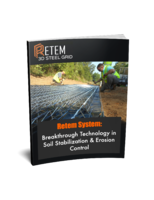ASTM Committee is developing proposed biofilm standard.
Press Release Summary:
ASTM International Committee E35 on Pesticides and Alternative Control Agents has begun work on latest in series of standards on biofilm. Proposed standard is WK17813, Test Method for Quantification of a Pseudomonas aeruginosa Biofilm Grown with Low Shear and Continuous Flow Using a Drip Flow Biofilm Reactor. Biofilm is defined as microorganisms living in self-organized cooperative communities, which are embedded in slime and can be found on variety of surfaces.
Original Press Release:
ASTM Pesticides Committee Developing Latest Proposed Biofilm Standard
ASTM International Committee E35 on Pesticides and Alternative Control Agents has begun work on the latest in a series of standards on biofilm. The proposed new standard, WK17813, Test Method for Quantification of a Pseudomonas aeruginosa Biofilm Grown with Low Shear and Continuous Flow Using a Drip Flow Biofilm Reactor, is being developed by Subcommittee E35.15 on Antimicrobial Agents.
According to Darla M. Goeres, senior research engineer, Center for Biofilm Engineering, and E35 member, biofilm is defined as microorganisms living in a self-organized cooperative community. These communities, which are embedded in slime and can be found on a variety of surfaces, can have positive and negative effects and are currently being investigated by industry, medical, professional and regulatory agencies.
Goeres says that the qualitative characteristics that define a particular biofilm, such as architecture, population density, microbial ecology and chemical composition, are controlled by the physiochemical properties of the environment where the biofilm exists. "Intuitively, the biofilm found in a chronic wound infection is different from the biofilm found in drinking water distribution systems or the biofilm present in constructed wetlands," says Goeres. "Laboratory biofilms are engineered to exhibit a particular set of qualitative characteristics that best represent the environment under investigation."
The difference between biofilm grown with a drip flow reactor and those covered in previous biofilm standards (E2562, Test Method for Quantification of Pseudomonas aeruginosa Biofilm Grown with High Shear and Continuous Flow Using CDC Biofilm Reactor; and E2196, Test Method for Quantification of a Pseudomonas aeruginosa Biofilm Grown with Shear and Continuous Flow Using a Rotating Disk Reactor) is that biofilm is grown under low fluid shear close to the air/liquid interface and that the drip flow reactor is a plug flow reactor system, resulting in biofilm that is visible to the naked eye and smooth and slimy in appearance. Biofilm generated in a drip flow reactor could represent those found in a wide spectrum of places, including cooling towers, produce sprayers, on food processing conveyor belts, on catheters and in lungs with cystic fibrosis.
For further technical information, contact Darla M. Goeres, Center for Biofilm Engineering, Montana State University, Bozeman, Mont. (phone: 406/994-2440; darla_g@erc.montana.edu). Committee E35 meets April 7-10 at the April committee week in Anaheim, Calif. For membership or meeting information, contact Jennifer Rodgers, Technical Committee Operations, ASTM International (phone: 610/832-9694; jrodgers@astm.org).



